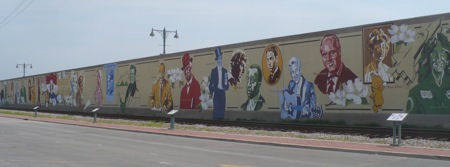For reasons that aren’t entirely clear to me, French debates over university reform have often dwelt on the question of human resources, and even on the very desirability of thinking about universities in those terms. The advocates of a more “modern,” “competitive” university — who are themselves often products of business and public administration schools — have generally tended to take such a perspective for granted. In an exemplary moment, Valérie Pécresse, in January 2009, remarked that
”… je sais que les ressources humaines sont le cœur de l’université. Naturellement, dans toute organisation les ressources humaines sont au cœur du système. Mais dans un monde où la production intellectuelle est tout, plus que jamais, « il n’est de richesse que d’hommes ». Ces hommes et ces femmes qui font l’université, je les écoute et je les entends.”
[“… I know that human resources are at the heart of the university. Naturally, human resources are at the heart of the system in any organization. But in a world where intellectual production is everything, more than ever, ‘the only source of wealth is men.’ These men and women who are making the university, I’m listening to them.”]
If you believe that ideology is at its most effective when it is perceived to be entirely natural and universal, then this remark was an ideological moment par excellence. For Pécresse’s assumption here is that every human organization depends on “human resources”; she makes no distinctions between organizations governed by contemporary business logic and any other kind of organization. And in invoking a 16th century proverb by Jean Bodin, she certainly suggests that the logic of human resources long predates contemporary capitalism.
At the same time, Pécresse’s discourse was hybrid. Even as it placed the image of human resources at the heart of the university, it allied itself with a very traditional conception of academic life: the conception where the faculty are the university, where the university is constitutively a site of the production of knowledge, of “intellectual production.” The logic is one of an extension of the traditional logic: yes, men and women make the university — as the traditional definition would have it — but what they are doing is (intellectual) production that constitutes wealth — which inserts a much more business-centered view of human activity into the traditional definition.
Pécresse generally seemed to believe in the success of her hybrid discourse. Her detractors tended not to, seeing her as an agent of naked “corporatization of higher education” (as it is called in English), and I suppose viewing her gestures towards traditional views of academia as idle rhetoric.

